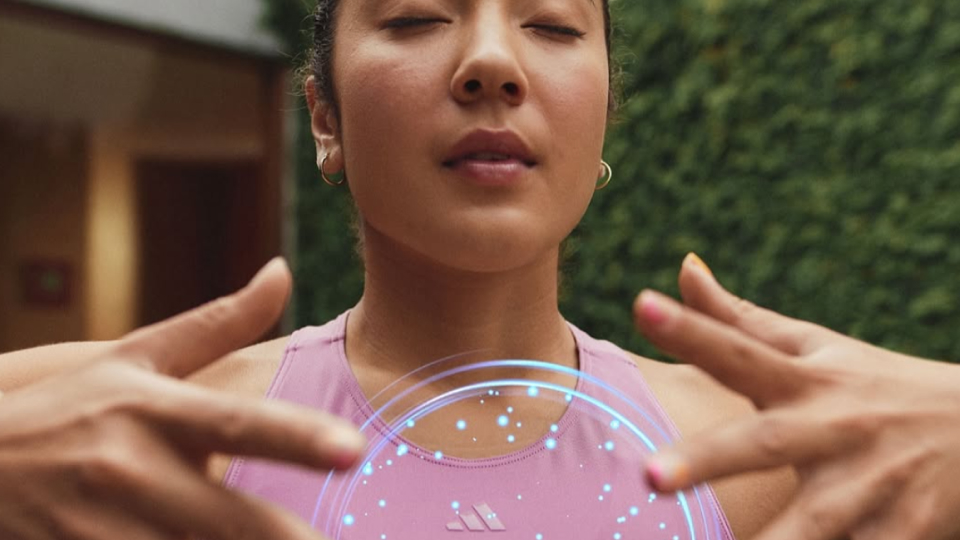AI seems to be making news headlines every day. Just this morning, I watched a video of two AI-powered robots putting dishes away with a "shared mind" (sign me up for that!). While we shouldn’t worry about humanoids teaching a BODYPUMP™ class anytime soon, it’s clear that the fitness industry won’t be immune to the changes AI will bring.
To find out more, we caught up with digital guru, Amber Taylor. With over 20 years of experience in international e-commerce at companies like Amazon and Nike and Les Mills, we were eager to hear her thoughts on how AI is shaping the fitness industry.

Jon: How is AI showing up in fitness?
Amber: AI is appearing in fitness in a variety of ways. It ranges from biometrics providing recommendations for what people should do at home or in a class setting, to DNA and blood testing for tailored fitness insights.
Jon: Group training is highly human-centric. Is there a danger that AI could remove some of the human element?
Amber: It’s a nuanced answer… I think we have an exciting opportunity to look at how AI can augment and enhance the human element. If we look at big industrial shifts – like the introduction of cloud computing or mobile phones – each step introduced new fears and new opportunities.
It’s up to us to embrace the opportunity and create what’s right for people. If we’re not curious about what we can do to continuously improve, we miss opportunities. That said, I do not think machines can replace humans, especially in a group training environment – people need people. In fact, I believe this is truer now than ever.
The beauty of group training is that it is group. People crave community and perform better in a community. So that element shouldn’t go away.
Jon: What is the unique value that AI offers exercisers?
These days, we increasingly expect personalized services, where our needs are automatically understood. In fitness, if someone comes in looking for a strength-building workout or a way to unwind after work, they expect the right recommendation based on their stated goals. AI can take it one step further by analyzing not just what customers say they want, but what they actually do.
Often, people say they’ll work out five or six days a week, but in reality, they don’t. This is where AI can make a real impact – by tracking actual behavior and offering realistic recommendations that align explicit goals with implicit habits.
Jon: Has Les Mills been experimenting with AI, and in what way?
Amber: Yes, in a couple of areas. At Les Mills, we focus on finding the most effective ways to help people start and enjoy fitness. This includes using AI-driven recommendations and gamification. Ensuring safety remains a top priority, and the neat thing is, because every one of our programs is backed by science, when we do use AI to give recommendations, it’s predicated on safe content that works.
For those using the LES MILLS+ app to enjoy at-home workouts, we use AI for rolling recommendations based on explicit intent: what people told us they wanted to do when they first joined up; and implicit behavior – what they are actually doing.
We’ve also tested AI with content. We made a series of modules called “Mindful Movement”target="_blank", where people can do a down-regulation breathing exercise with the support of a virtual orb. In testing, we found this reduced heart rate.
There are also some really nerdy ways we use AI too, like to augment our engineering capacity and support with coding. We also use it to help filter our customer service queries for trends so we can fix things faster upstream. We’re exploring AI to help with translations and dubbing of content.

Jon: What have you learnt so far?
Amber: AI is becoming increasingly capable, but it’s still just a tool. For example, we found that translation processes were time-consuming and costly, so we explored AI automation to streamline them. However, AI can make mistakes, which means human intervention is crucial. In one instance, AI mistakenly translated arms as guns in a particular country – not good! That’s why humans need to audit and refine AI outputs.
Another critical lesson is ensuring AI models are trained on diverse and high-quality data. Some companies have faced serious issues due to biased training data. A well-known case (which I won’t name) involved an AI-powered credit card system that was primarily trained on men’s financial data, resulting in women being unfairly denied credit. That’s a major problem.
We can learn from these mistakes by ensuring AI is trained on diverse datasets to produce accurate and fair outcomes.
Jon: Looking to the future, how might AI further enhance our exercise efforts?
While I can’t share specifics about our AI developments, we are always exploring tools to improve exercise experiences – whether it’s enhancing how gyms offer workouts, supporting Instructors delivering classes, or motivating the end users who are working out.
Everything from using video technology to break down new moves, image recognition for streamlined learning, and AI-powered motion tracking are on the table. We’re delving deeper into the best ways to track activity and ensure the right footpaths are laid for exercisers – whether they’re training in the gym or at home.
We’re excited about the potential. But at the end of the day, group training is a deeply human experience where individual flair and personalities shine. AI must never dilute that.

5 WAYS TO START USING AI TO ENHANCE YOUR TRAINING
1# Choose a tracking tool that monitors heart rate variability (HRV), recovery times, and workout frequency. It can keep you motivated and help alleviate the risk of burnout from doing too many high-intensity sessions.
2# Use a sleep tracker to analyze sleep patterns. It will help you prioritize rest days or choose lighter training options based on fatigue levels.
3# Leaning into AI-generated insights to shape a training plan that balances high-impact cardio with strength, flexibility, and low-impact training.
4# Leverage the metabolic data from your tracker to help tailor your hydration and nutrition.
5# Embrace mindful movement: Download the LES MILLS+ app and enjoy a calming augmented reality experience featuring a digital orb, movement and breathwork.
Top tip: Remember AI-generated advice is never foolproof and should always be checked by a human. Nothing beats the advice of a qualified expert.








